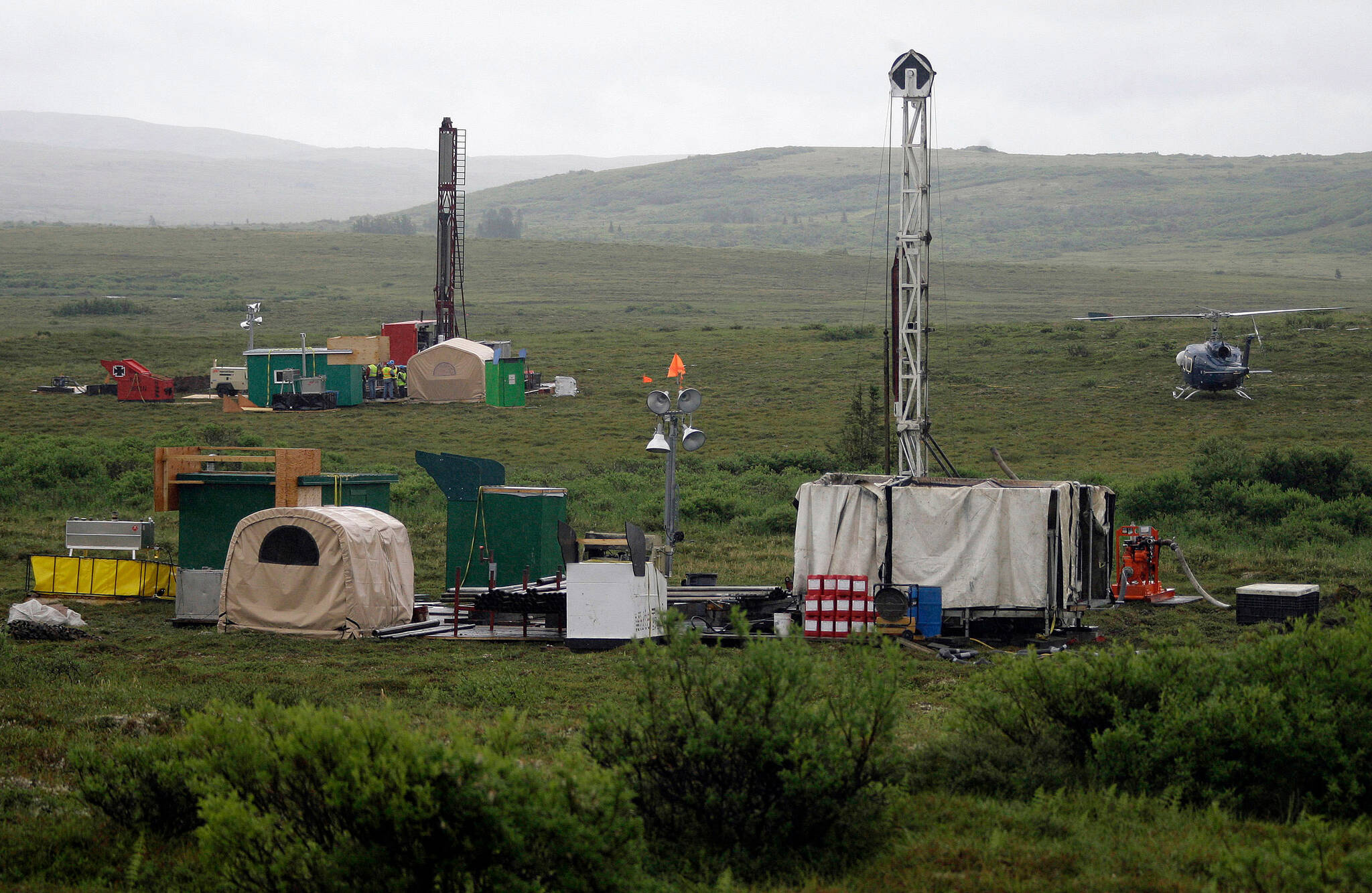Backers of a proposed copper and gold mine in southwest Alaska “tried to trick regulators by pretending to pursue a smaller project with the intention of expanding” after the project was approved, a report released Friday by a U.S. House panel says.
The Associated Press obtained a copy of the report ahead of its release. The report makes several recommendations, including environmental review process changes to “ensure holistic review of cumulative impacts of projects.”
Mike Heatwole, a spokesperson for the Pebble Limited Partnership, which is seeking to develop the Pebble Mine, said Friday the company has not had time to fully review the report. But “to the extent the report contains any suggestion that we tried to mislead regulators in any way, it is categorically wrong and misinformed of the realities of the Pebble permitting process,” he said in a statement.
The proposed mine is in Alaska’s Bristol Bay region. The U.S. Environmental Protection Agency has said the region supports the largest sockeye salmon fishery in the world and that it also contains significant mineral resources.
The debate over the project has gone on for years and spanned several presidential administrations.
The report, from Democratic Reps. Peter DeFazio of Oregon and Grace Napolitano of California, says that at the same time a now-former top official with the Pebble partnership told a subcommittee there were “no current plans” for expansion of the proposed mine, the Pebble partnership was seeking to develop an expanded project “and touting that larger vision in pitches to potential investors.”
The same week in 2019 that Tom Collier, then the Pebble partnership CEO, testified before the subcommittee, he and other project leaders “pitched a much longer-term Pebble Mine to investors,” the report said.
The report cited a similar presentation by Pebble leaders dated months earlier and said the slide deck presentation was also being shown to investors in early 2020.
Collier resigned in September 2020.
The U.S. Army Corps of Engineers in late 2020 rejected a key permit authorization for the Pebble project. That decision was appealed by the Pebble partnership, which is owned by Canada-based Northern Dynasty Minerals Ltd. The appeal has yet to be decided.
Meanwhile, the EPA is weighing whether to proceed with proposed restrictions that would block mine plans. Pebble has called the EPA’s actions premature. But mine opponents have urged the agency to act to stop large-scale mining in the region.
In Collier’s written remarks, submitted to the subcommittee in 2019, he said Pebble had “no current plans, in this application or in any other way, for expansion. If expansion did become feasible, new permits would be required. The permit applicant would have to go through the same rigorous procedure that Pebble is now going through. Any concerns with scope or environmental risk can be addressed in that new permitting process.”
Heatwole, in the statement Friday, said the Pebble partnership has been “forthright and clear in all of our public communications and with regulators that Pebble would need to be permitted in phases.”
He said the Pebble partnership has also been clear with stakeholders that it was “planning to construct and operate an initial mine at Pebble for twenty years,” that the “initial plan did not mine the entire resource” and that “at some future time, we would likely consider an expansion, but had no formal specific plans for additional mining at Pebble (nor could we given the contingencies associated with the initial phase submitted for permitting).”
“We openly shared all of this with the committee and are extremely disappointed with the politicization of the so-called review of the project that is inconsistent with reality,” he said.
DeFazio chairs the House Committee on Transportation and Infrastructure. Napolitano chairs a panel subcommittee.
The report, written by Democratic majority staff, as part of its recommendations, urges updates to project review processes. It recommends the corps’ permit application form be updated “to include questions about the envisioned full scope of a project and any anticipated additional permitting.” It says agencies should take into account such things as economic feasibility analyses.
The report also says Congress should explore legislative actions to provide protections for the Bristol Bay watershed.

